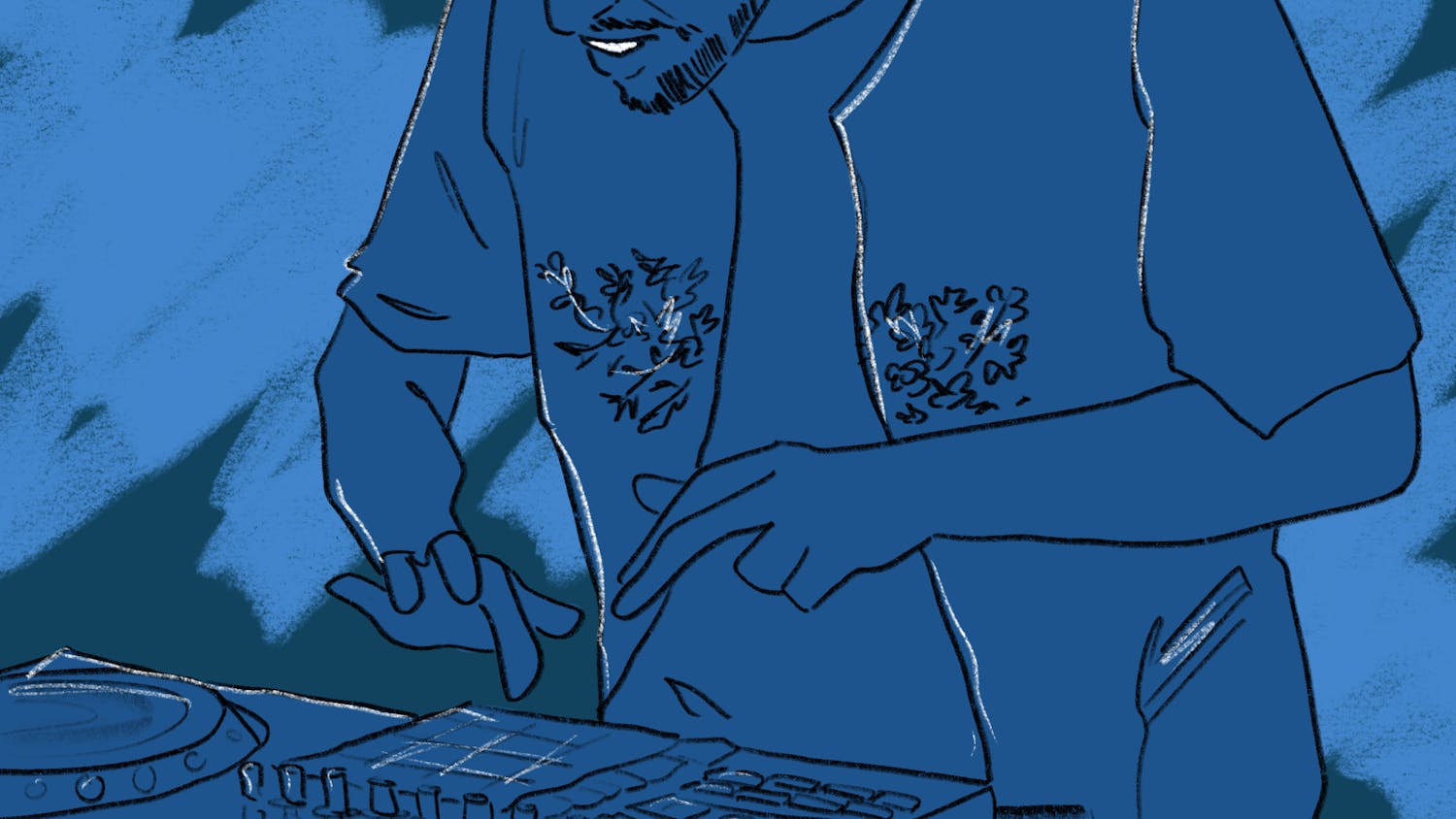In Joe Overstreet’s painting “The New Aunt Jemima,” a 7-foot-tall woman usually seen on syrup bottles is portrayed atop a structure mimicking the pancake-mix box .The image shows Aunt Jemima smiling as she blasts a machine gun, pancakes flying like shrapnel. The Earth is painted at her feet as Overstreet reclaims the image of Aunt Jemima, whose minstrel show roots trace back to darker days of American race relations.
This piece will join more than 100 works of art at the Hood Museum of Art this fall in an exhibition titled “Witness: Art and Civil Rights in the Sixties.” The collection comes to Hanover after recently finishing its debut at the Brooklyn Museum in New York City, where its four-month run finished July 13.
In development for several years, the exhibition was created to mark the occasion of the 50th anniversary of the passing of the Civil Rights Act of 1964, said Kellie Jones, art history and archaeology professor at Columbia University, and one of the original curators for the show’s premiere in Brooklyn.
“Witness” showcases the works of 66 artists in various mediums, including painting, sculpture, photography and a piece made completely of lights. Jessica Womack ’14, one of the Hood curators for the show, began working on the piece as an intern for the museum her senior year. She said the show includes work from artists of various of races, nationalities and backgrounds.
“Several of the artists in the show are examining the intersectionality of identity,” she said. “This show isn’t only about race, but about examining other aspects of identity, like gender or class.”
The exhibition is split into eight thematic sections, including “Sisterhood” — exploring the role of women in the civil rights movement — and “Black is Beautiful,” which addressed Eurocentric ideals of beauty and the reassertion of blackness as beautiful.
Each artwork displayed was created in the 1960s and carries some message of social activism or reform.
“Every one of these artists was an activist during this time, and their artwork was their voice,” said Juliette Bianco ’94, deputy director of the Hood and curator of “Witness.” “This variety of artists were not only responding to the events of the civil rights movement, but really knew their creativity and artistic voice was an important part of forwarding the cause.”
Bianco said students may be surprised at some of the bigger names they’ll see, including Andy Warhol and Norman Rockwell.
Hood director Michael Taylor said the museum saw the possibility of showcasing “Witness” as an opportunity to engage the student body around the themes it presents.
“This exhibit has the double whammy of showing extraordinary artwork that anyone would want to see, but also having a subject matter with such a deep resonance with its viewers,” he said.
Bianco shared the same enthusiasm for the exhibit’s potential for teaching and facilitating conversations. The Hood has reached out to several faculty members, hoping to provide moments that can be taken out of the museum and into the classroom, she said.
While details are still being finalized for the upcoming term, the Hood is planning several events on campus to engage the public with the artwork. Jae Jarrell, an artist and activist, will visit campus during the exhibition to speak about the works and themes “Witness” presents.
Jarrell’s “Urban Wall Suit” is included in the collection, a multicolored two-piece suit that invokes images of graffiti and signs plastered onto a brick wall. The Hood is also working with the theater department and local theater groups to organize a live reading of Lorraine Hansberry’s play “Raisin in the Sun” in the exhibition space, Bianco said.
Jones, along with Teresa Carbone, the Andrew W. Mellon Curator of American Art at the Brooklyn Museum and fellow curator of the original exhibition, will also be visiting campus to speak to the general public.
Engaging students and finding how these images resonate with student life will help the Hood facilitate conversation around these topics on campus, Womack said.
“Students can come into the museum and have conversations about the art in a respectful manner,” she said. “Then, they can bring these discussions and themes the exhibition elicits and continue them in their own spaces and groups.”
The theme of education runs through several works in the exhibition and is an integral part of the civil rights movement, Jones said. One notable piece is “The Door (Admissions Office)” by David Hammons. A wooden door stands upright with “Admissions Office” on the glass panel in large, black letters. Under the letters, again in black paint, is the imprint of a body pushed up against the door, unable to enter, a commentary on school segregation.
“Young people and students have always been an integral part of the civil rights movement and social activism as a whole,” Jones said. “It’s exciting to see these pieces being brought back again to engage another young audience with these themes.”
For just over three months, students and the general public will have the opportunity to explore this wide breadth of artistic mediums and contemplate the personal, raw themes it encompasses.
“This exhibition has the capability to reach beyond the artistic section of campus, and really resonate with people all over campus,” Taylor said.
“Witness” will be on display in the Hood Museum from August 30 through December 14.



